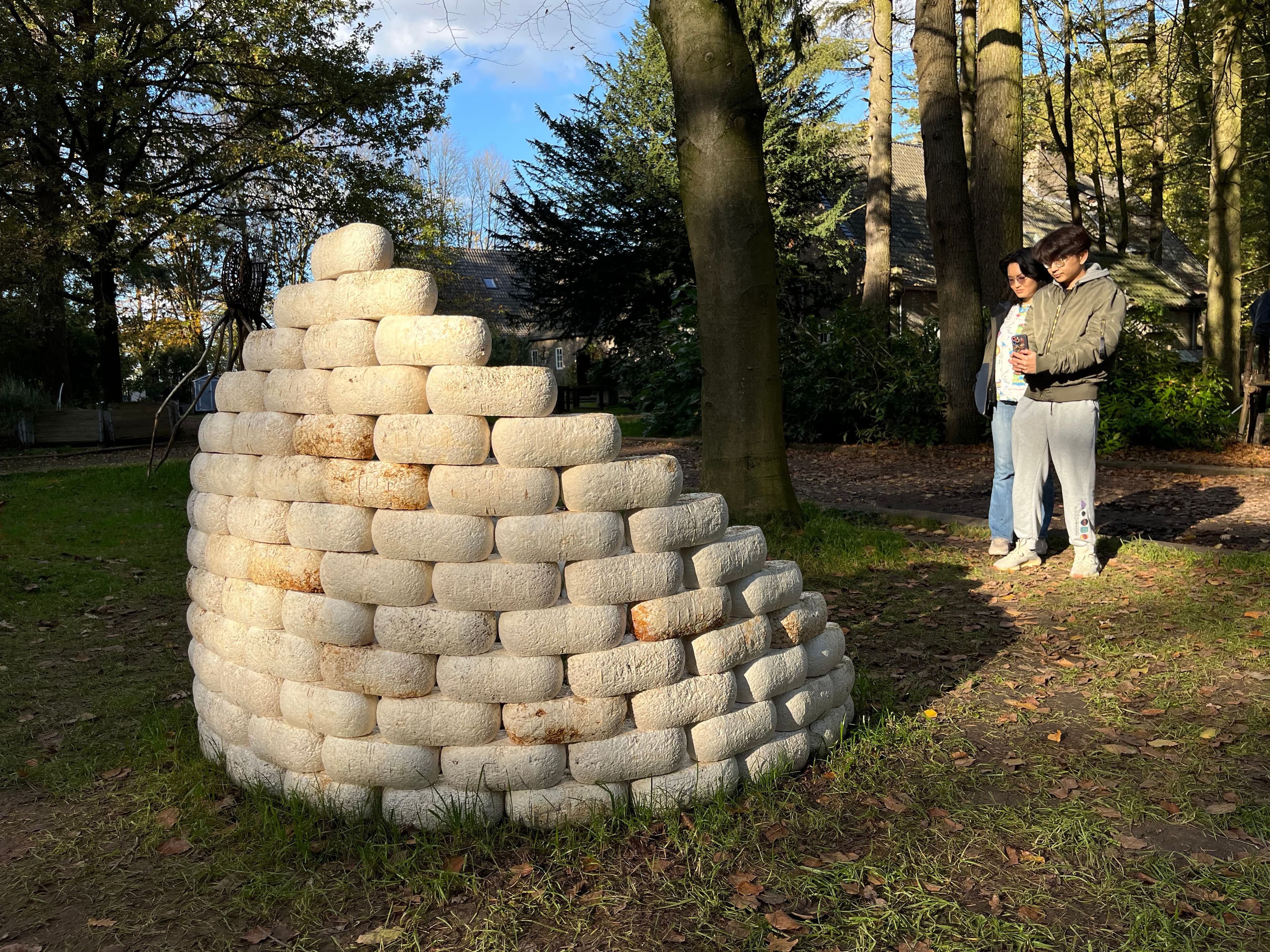1. What specific properties of fermented household organic waste make it a suitable substrate for mycelium cultivation in the creation of bio-bricks?
The process of fermentation itself is what turns mixed household organic waste into something suitable to grow a material with. The idea of using mixed organic waste from the household came as a way to keep (at least a part of) this waste stream within the neighbourhood and repurpose it together with the people. In a household bin, organic waste is never twice the same in terms of proportions of main substances. Bio-waste is very heterogeneous and it needs to go through a biological process to become more homogeneous to work with. In this case, the fermentation process allows people to simply use almost everything. Currently, all biological remains are used except for meat, large seeds (mango or avocado pits), bones and faeces.
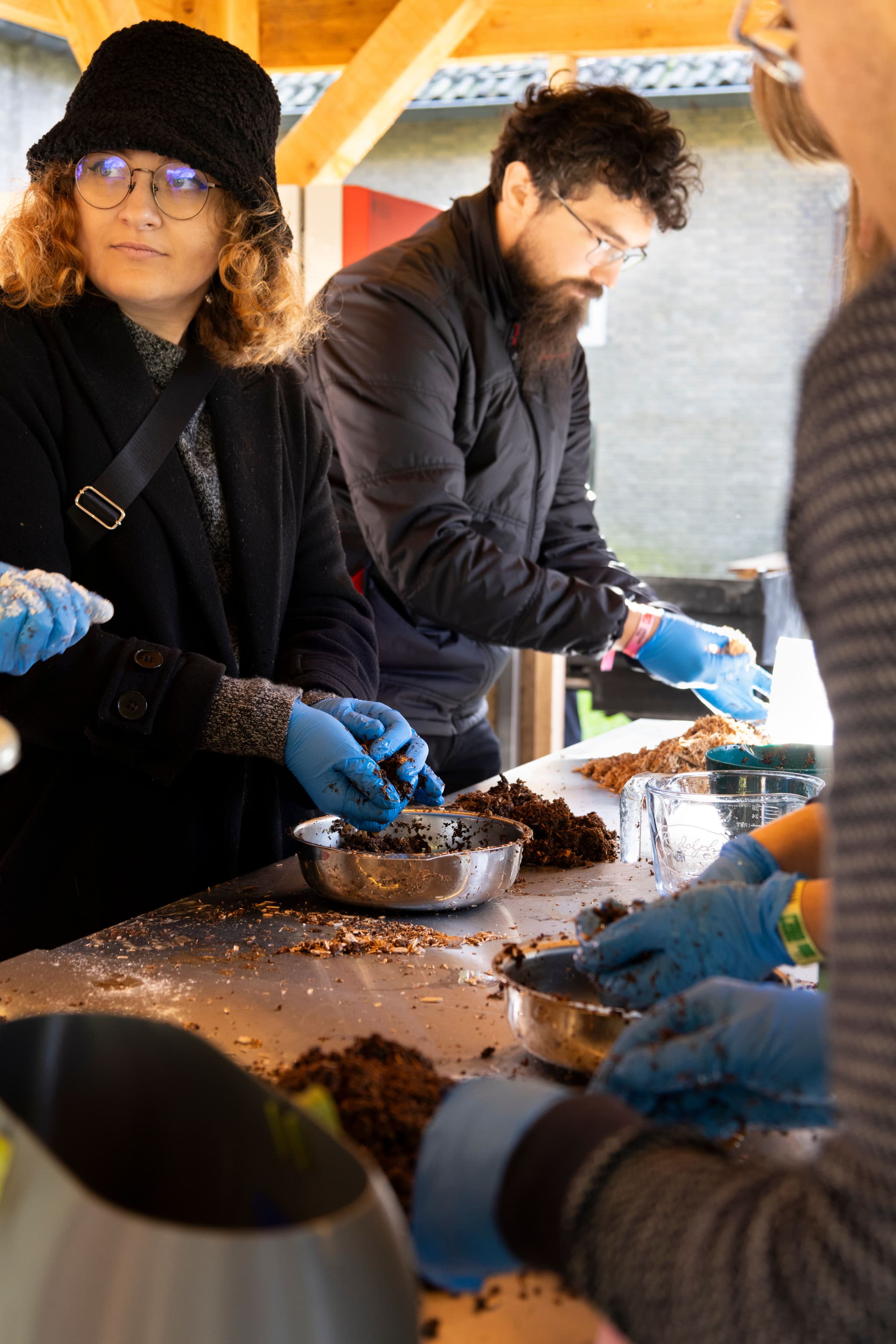
2. Can you detail the process of combining organic waste with fungal spores in 3D-printed moulds? What challenges did you encounter in ensuring uniform growth and structural integrity of the bio-bricks?
The method of growing a biobased material with household organic waste has been developed from the beginning to be community-friendly. This means that the material should be reproducible in non-sterile environments, with low technological means, and by people who are relatively inexperienced.
To become a homogenized mass, household organic waste is put to ferment for about one month. After that, it gets dried and then mixed with a fungal starter. The proportions of biowaste to fungal starter may vary from 1:1 to 1:5. This has to do with factors such as the prior experience of the person using the technique, growth temperatures and their stability (it is known that such mycelium-grown materials tend to develop better in the warm season rather than the cold one), and contamination risks. The mixing of the two parts (biowaste and fungus) itself can vary from being very thorough to superficial. Even when there are clumps of biowaste within a mould that haven’t been mixed with the starter, the shape will still develop when the inoculated spores are fresh and sturdy.
Putting the mix into blocks (or bio-bricks) is not the only shaping possible. In theory, the shape in which someone could grow objects from their household organic waste is more up to the imagination. The bio-block 3D-printed mould that was developed is just one way for people to contribute with little effort. The bio-blocks can make collaborative constructions, helping people to see their contributions immediately. However, it is encouraged that people experiment creatively with whatever means they have at hand, as long as the goal of reducing household biowaste at the source is preserved.
The challenges of growing a biobased material with household organic waste are mostly skill-based. Although the method is simplified and suitable for general engagement, mentoring and assistance are valuable at key moments such as pressing the mix into the mould with the right pressure, or knowing how to identify when the fermentation process is going well.
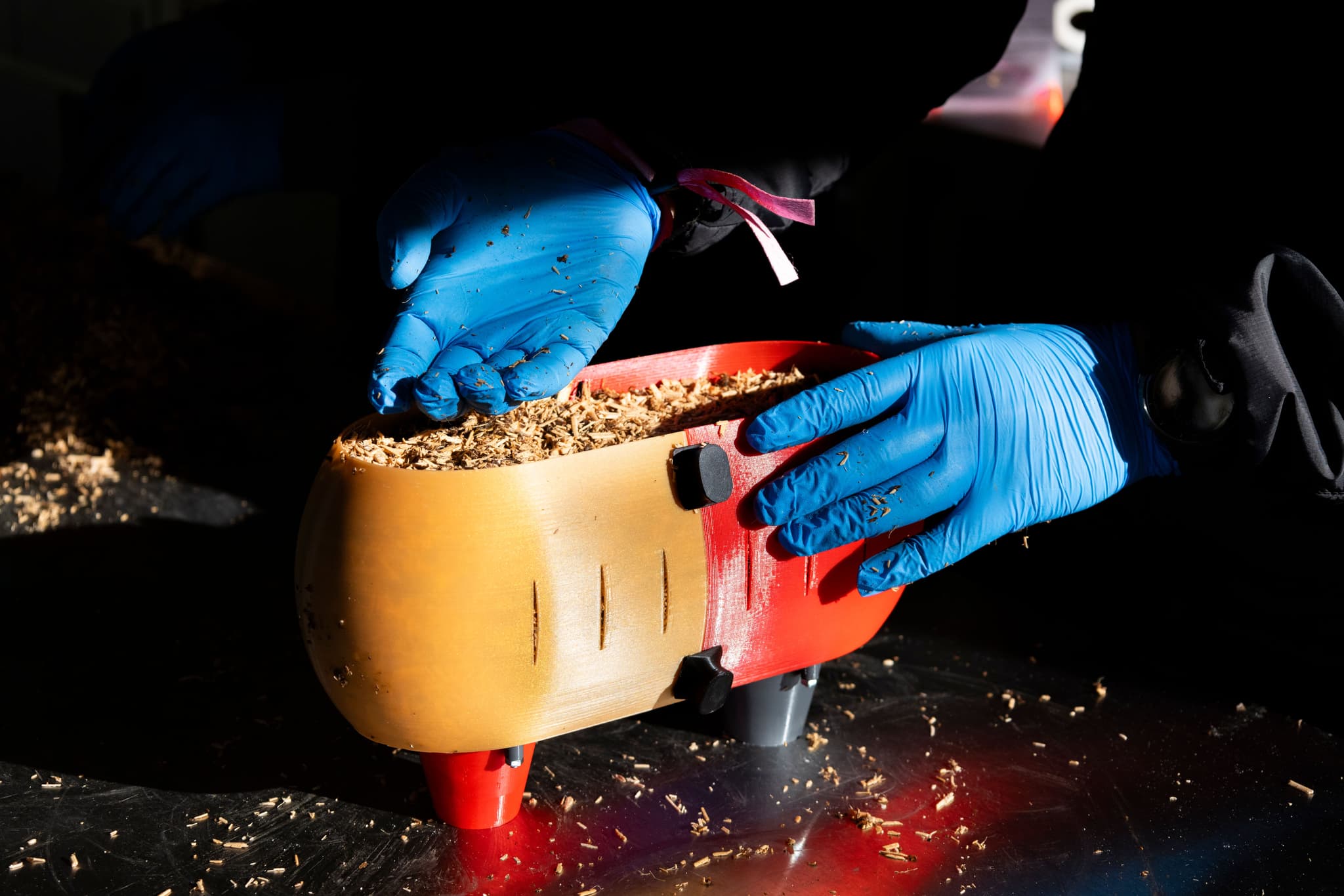
3. How does the incubation environment influence the development of the mycelium network within the bio-bricks, and what parameters are critical to control during this phase?
The fungal starter is stable enough to develop in fluctuating temperatures, but swings should not exceed ±5°C. Ideally, an incubator ensures temperature stability, airflow, humidity, and sterility. In its absence, objects can be grown in a household oven or even in a sealed box at room temperature. However, without an incubator, the grower’s skill and experience become even more critical.
An important feature of the approach is to work with existing conditions, welcoming natural occurrences. The more stable the factors, the faster the development. One should expect a fully grown object within one week. If growth is delayed beyond 10–12 days, the material is likely contaminated by other fungi.
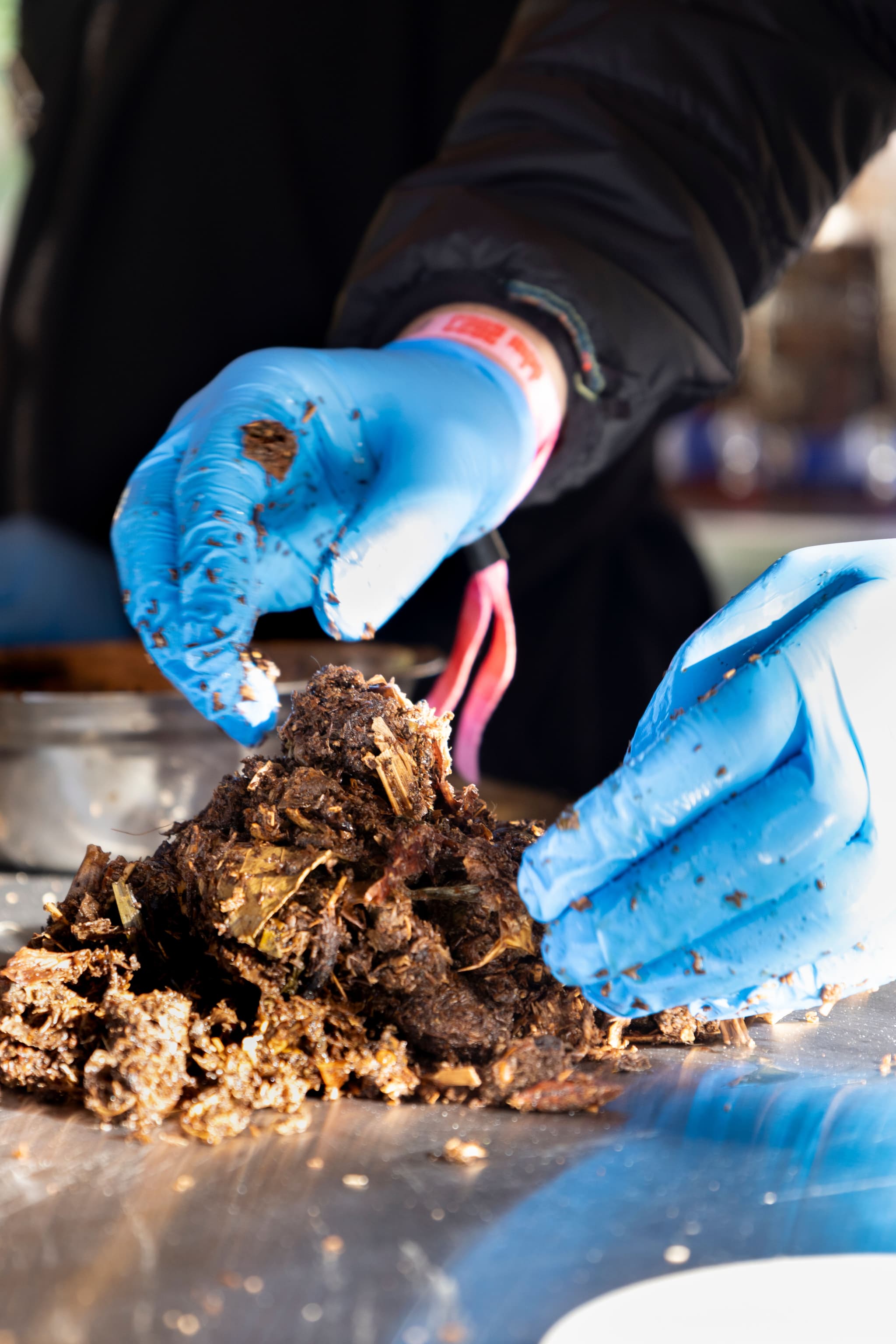
4. What considerations were made regarding the selection of fungal species for this project, particularly in terms of growth rate, binding strength, and environmental compatibility?
Many fungal strains were tested. The final considerations were:
- The fungus must be non-poisonous and preferably edible (eliminating health hazards);
- The mycelium network must be compact and tight (strong material properties);
- The fungus should be native to Europe, specifically the Netherlands, to reduce risks of ecosystem contamination;
- Development should be quick—about one week—to keep communities engaged;
- The fungus should be resilient enough to grow in non-sterile conditions.
Currently, the project uses the DIY starter from Ecovative, which meets all these requirements and proves to be a stable product suitable for inexperienced participants.
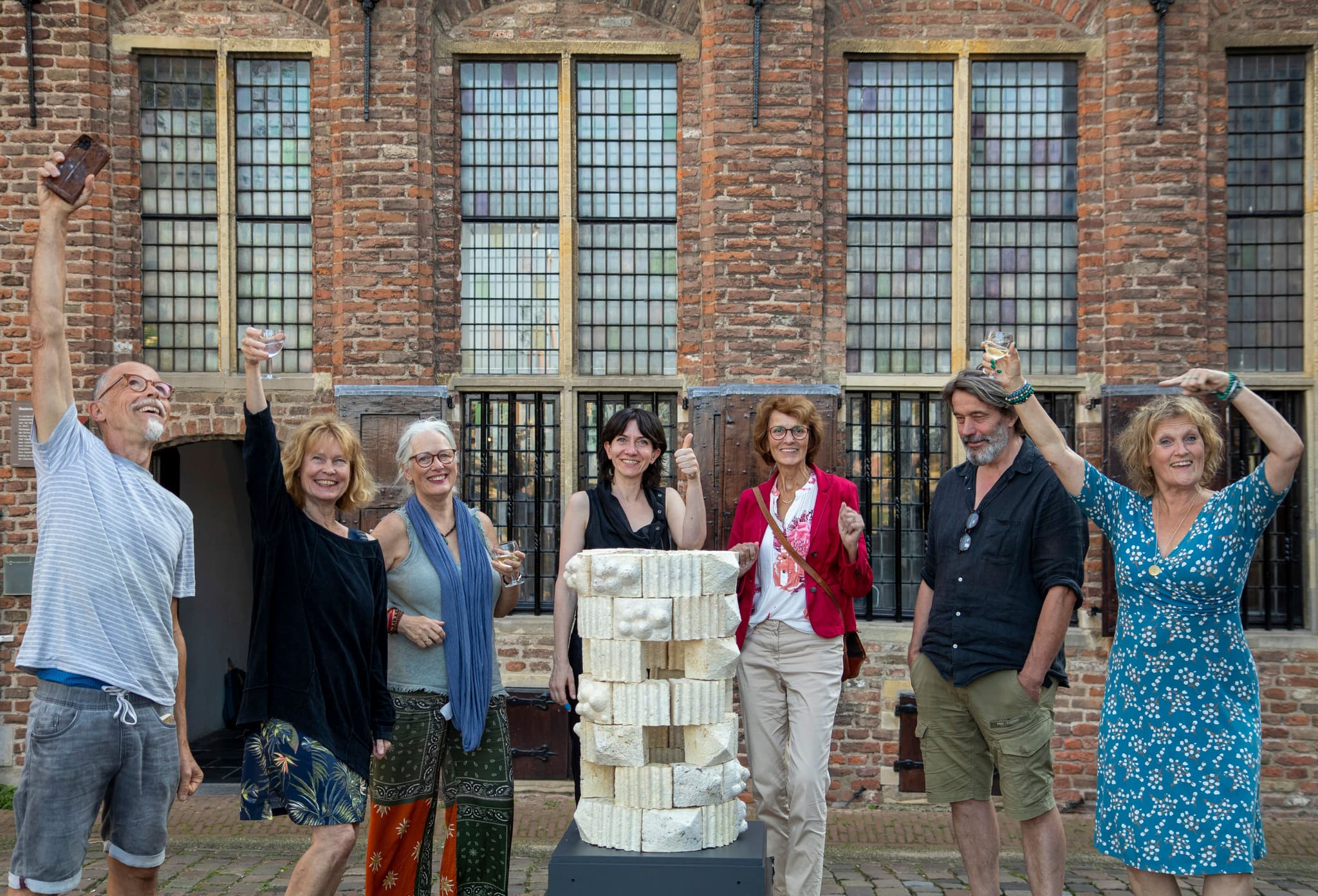
5. How does the participatory aspect of the project, involving community members in the creation of bio-bricks, contribute to the overall goals of sustainability and ecological awareness?
The participatory aspect is about addressing our readiness to act sustainably. It provides a technique that encourages people to reflect on household waste and how each citizen can contribute to change. When the project began, it was motivated by a rising distrust in governments and corporations to ensure an eco-sustainable future, and a growing sense of paralysis in the face of climate change. The project shows that change is possible even when policies and industries lag behind.
By exposing people to the possibility that household waste can be turned into circular material in their own hands, the project is empowering. It demonstrates new ways of working alongside nature and teaches that technology and nature can coexist. It offers a proactive method for people to imagine new possibilities for living on this planet.
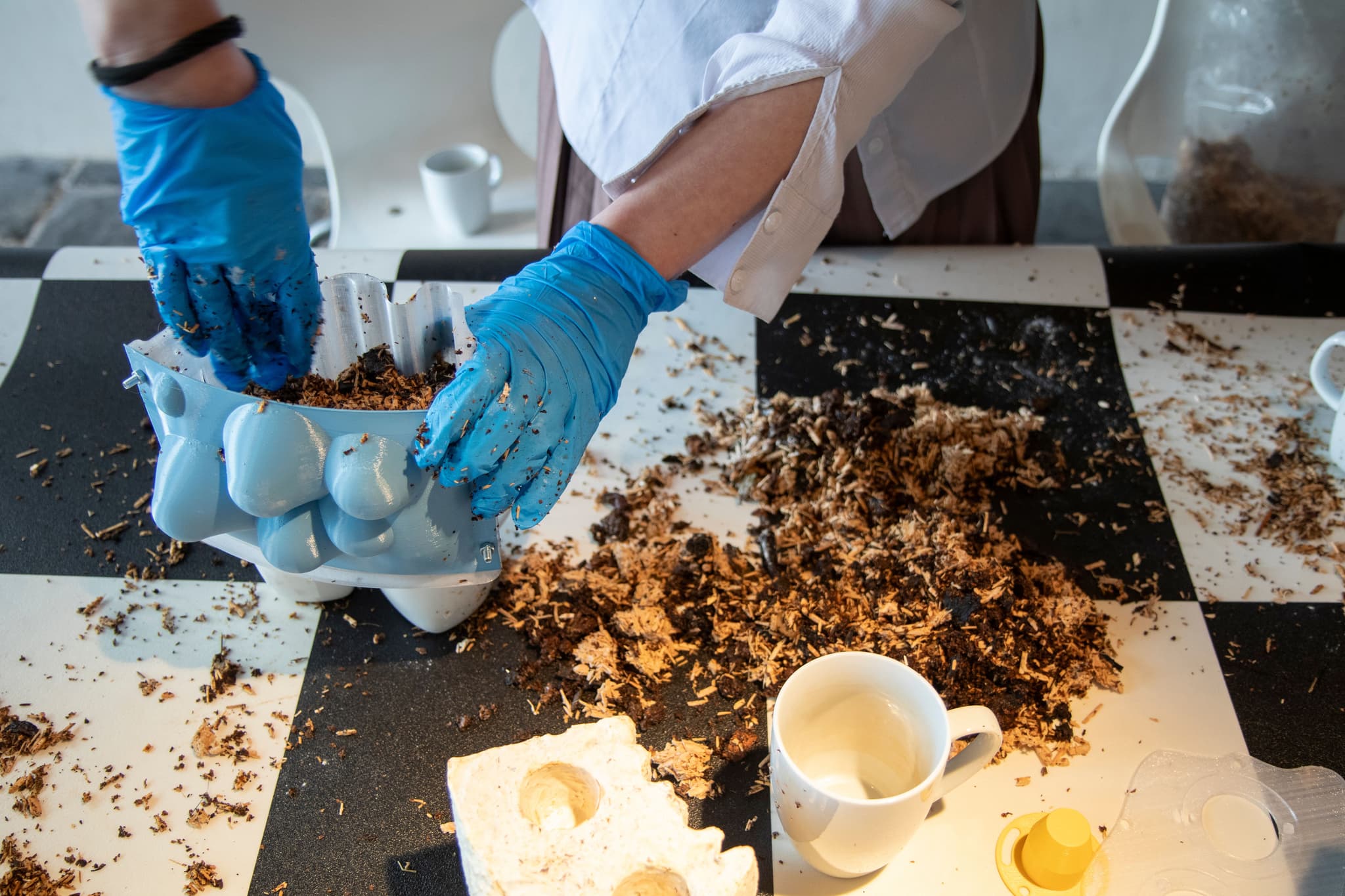
6. From a materials science perspective, how do the mechanical properties of these mycelium-based bio-bricks compare to traditional building materials in terms of load-bearing capacity and durability?
The material is lightweight, non-porous, insulating, and compact. It can withstand a degree of shock. The material is kept completely circular—not coated with anything—so it biodegrades naturally. As a result, it has a temporary existence. Indoors, it can last 2–3 years (or longer), while outdoors it breaks down faster, depending on weather and climate conditions.
As it biodegrades, it gradually loses its compactness, insulation, and non-porous properties. The process is approached as future craft—bio-craft, with an artisanal element of tinkering and skill. The more it is grown, the better one understands its properties.
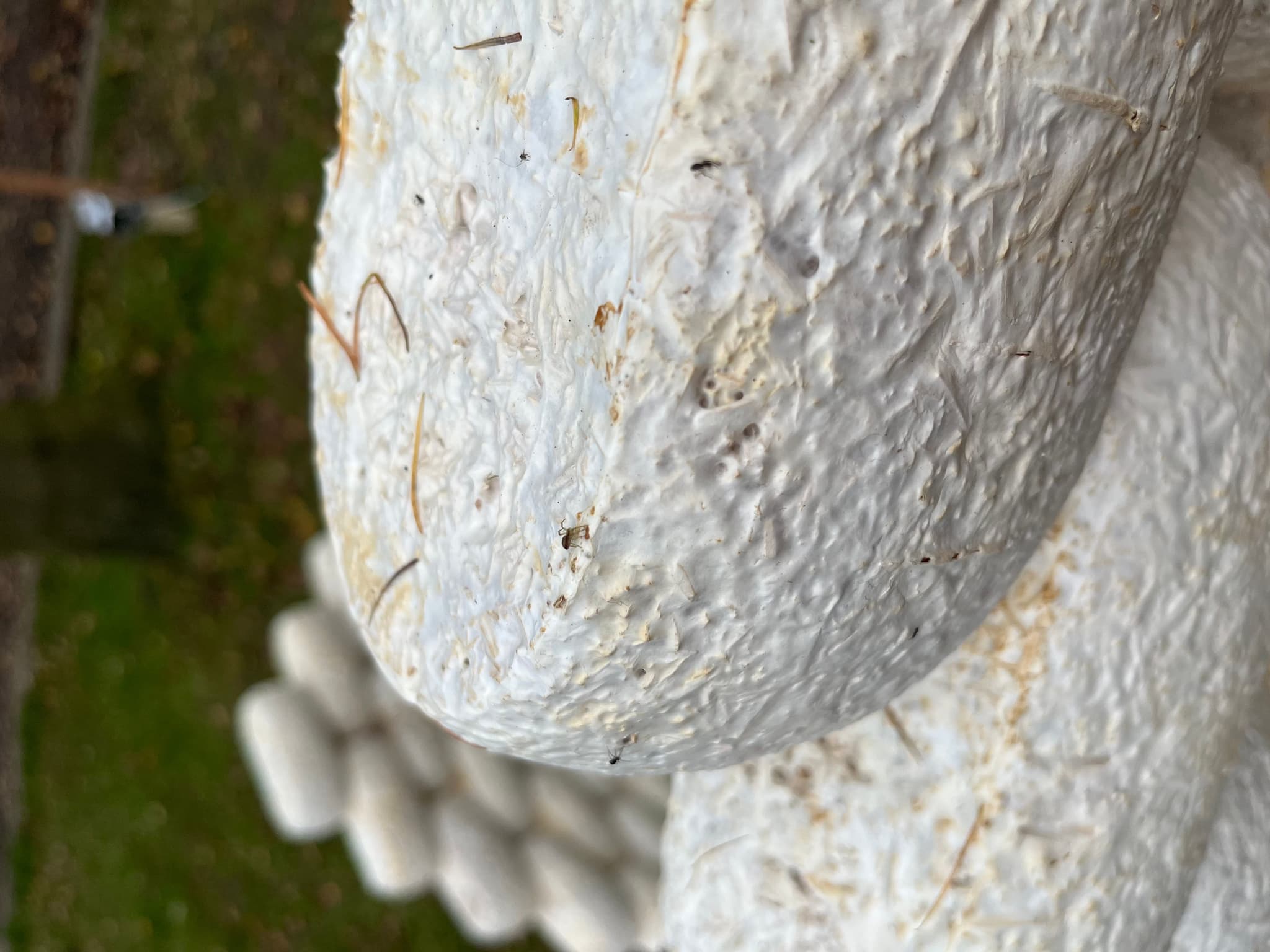
7. What are the potential applications of this bio-brick technology beyond artistic installations, particularly in sustainable architecture or temporary structures?
The possibilities are only limited by imagination. The design philosophy embraces “form follows organism”, letting the material guide the shape. Examples include indoor furniture, insulation, functional or decorative objects. Outdoors, it can be used for canopies, pavilions, or temporary structures. Particularly interesting is its application for temporary setups like exhibition furniture, retail fixtures, and theatre sets, which are inherently wasteful.
There is also a vision for using agricultural waste to build temporary biobased shelters directly at the site of waste production, eliminating landfill disposal. Structures built with this material can remain in place and biodegrade naturally, or be buried to turn into soil.
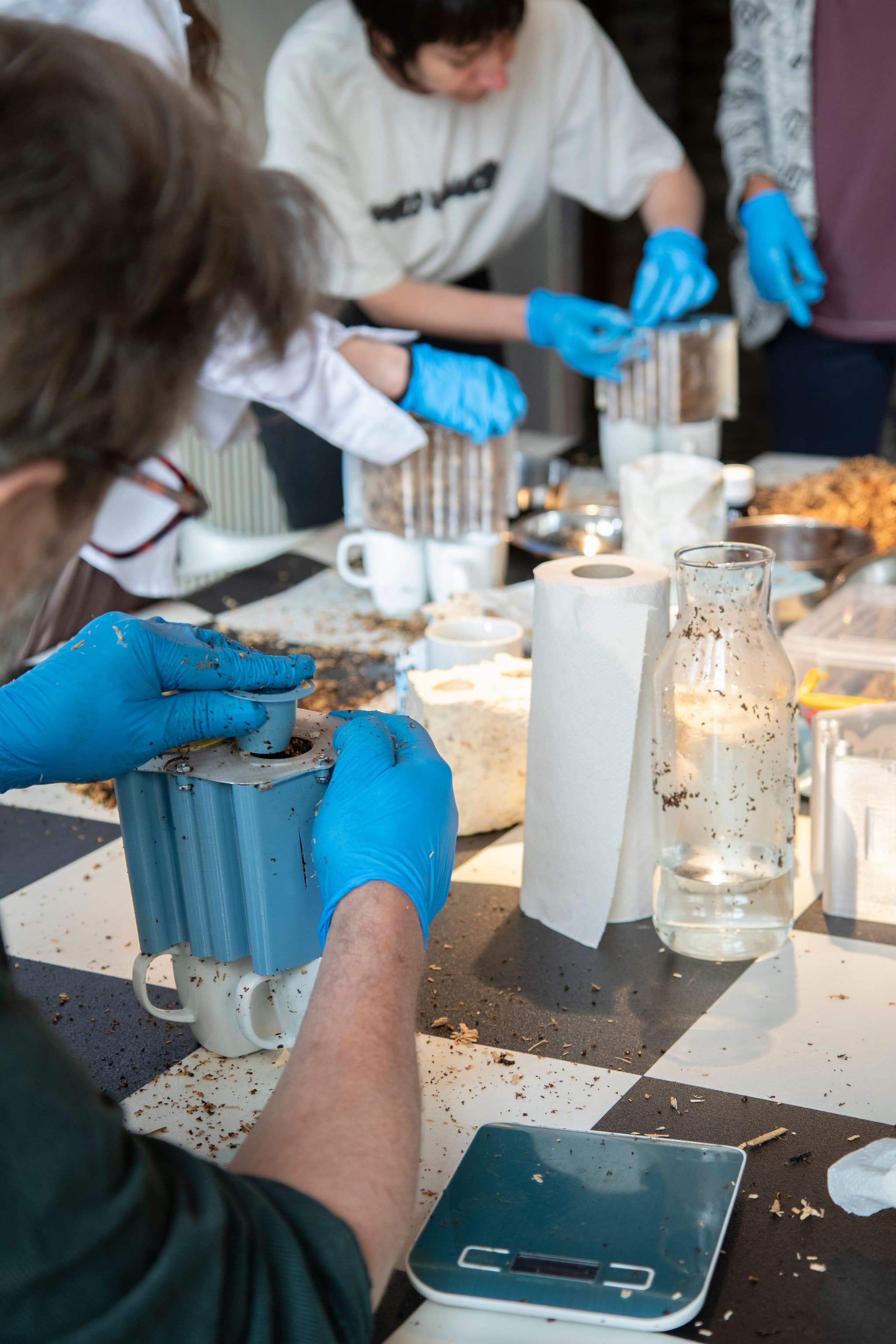
8. How does this project challenge conventional notions of material permanence and encourage a rethinking of the lifecycle of building materials?
The guiding principle is: purpose follows biomaterial. This circular biomaterial is flexible, able to grow in adjusted environments, thrive on mixed biowaste, and biodegrade naturally. Instead of trying to suppress these traits, the project embraces them, encouraging behavioural shifts around materials.
This directly challenges the obsession with permanence. Most materials are designed to last as long as possible, but this biomaterial requires maintenance and decomposes visibly. It forces us to witness both care and decay. This shift can help us rethink hidden processes in our systems, from building to waste. It suggests a lifestyle where waste is part of personal experience, fostering awareness of our interdependence with nature.
9. In what ways does the project integrate principles of circular economy, and how might this model be scaled for broader community-based sustainable building practices?
The principle here is a circular society, not just economy. The process starts with biowaste and ends with it, closing the loop. The vision is to set up neighbourhood biowaste tanks, where people separate and contribute waste. In return, they earn points exchangeable for mycelium-made goods. While not everyone will want rewards, those who do will drive the system forward.
This model creates a social and economic exchange system that diminishes biowaste while also activating community building.
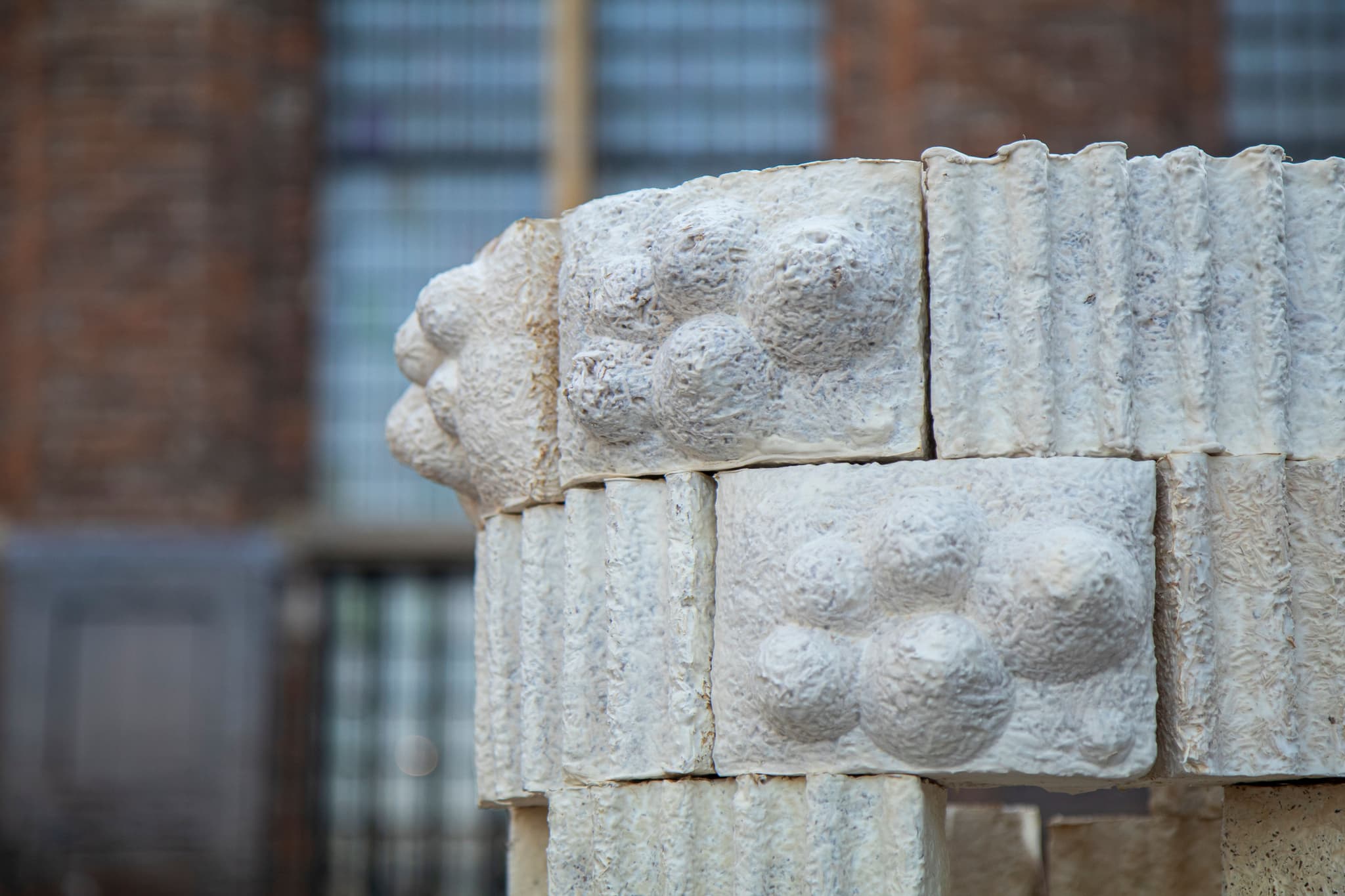
10. What insights have you gained regarding the social dynamics of collaborative biofabrication, and how might these inform future projects at the intersection of design, biology, and community engagement?
From experience, people are ready for such solutions. Communities show initiative and often contribute beyond expectation. The idea of turning biowaste into something circular close to home is hopeful and accessible. It provides an antidote to climate paralysis, a reminder that anyone can act today.
Bio-tinkering has potential as a DIY practice, helping knowledge grow outside of market constraints. While this raises questions about policy and ethics, governments could support it by fostering community economics and ensuring ecological safety.
In the long run, bio-crafting could even become part of education. It could be taught in schools as a “new natural science”, where children learn to forage and bio-build, equipping them for the real-world future.

11. Looking ahead, what advancements or modifications do you envision for the bio-brick fabrication process to enhance its applicability and performance in diverse environmental contexts?
There is always room for improvement. The vision is to make bio-building with waste as accessible as bread-making. With an inexpensive starter, anyone could activate waste. Like bread, some people would do the minimum, others would become masters. Both DIY and industry can co-exist.
Open-source instructions, like bread recipes, would allow anyone to participate. Those with more skill could produce higher-quality goods, while others could buy from them. Future advancements include making fungal starters as accessible as dry or active yeast, allowing anyone to mix them into their household bin.
